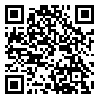BibTeX | RIS | EndNote | Medlars | ProCite | Reference Manager | RefWorks
Send citation to:
URL: http://tumj.tums.ac.ir/article-1-988-en.html
Background and Aim: While nowadays,great attainments have been achieved in curing and preventing the pathogenic fungal infections, and some how there has been reduction in the number of occurrences, the occurrences of opportunistic infections have been increased. Since the study of fungal infections in various organs (e.g.digestive system) is crucial ,and because of few study were done in this field in the world, it is decided to examine the apendectomide tissue for fungal contamination in Iran.
Materials and Methods: The work has been done for six months. After oparation sergery the appendix tissue in two media (formalin & normal salin) were carried out in the medical mycology laboratory at Tehran University of medical sciences. The specimens were examined directly and cultured in sabourauds dextrose agar with chloramphenicol (sc). In this experiment 200 appendicular tissues were examined.
Results: Out of them some fungi were isolated in 10 cases included 4 Candida albican (40%), 2 Candida tropicalis (20%),1 Cryptococcus sp. (10%),1 Candida sp.and 2 Geotrichum sp. Cryptococcus sp. was identified with mycological methods. This isolation related to a young man that has a history for long contact to pigeon.some of the fungi specially yeast can be a part of mycoflora in digestive system but the finding of Cryptococcus is uncommon.
Conclusion: In this study the fungi were isolated from 5% of appendisits and with pay attention to this finding that the most patients hadn.t background factors causing the proliferation of the fungal agents in the intestine, so with further studies it is probable to consider the fungi as the agents causing appendicitis in this patients.
| Rights and permissions | |
 |
This work is licensed under a Creative Commons Attribution-NonCommercial 4.0 International License. |





